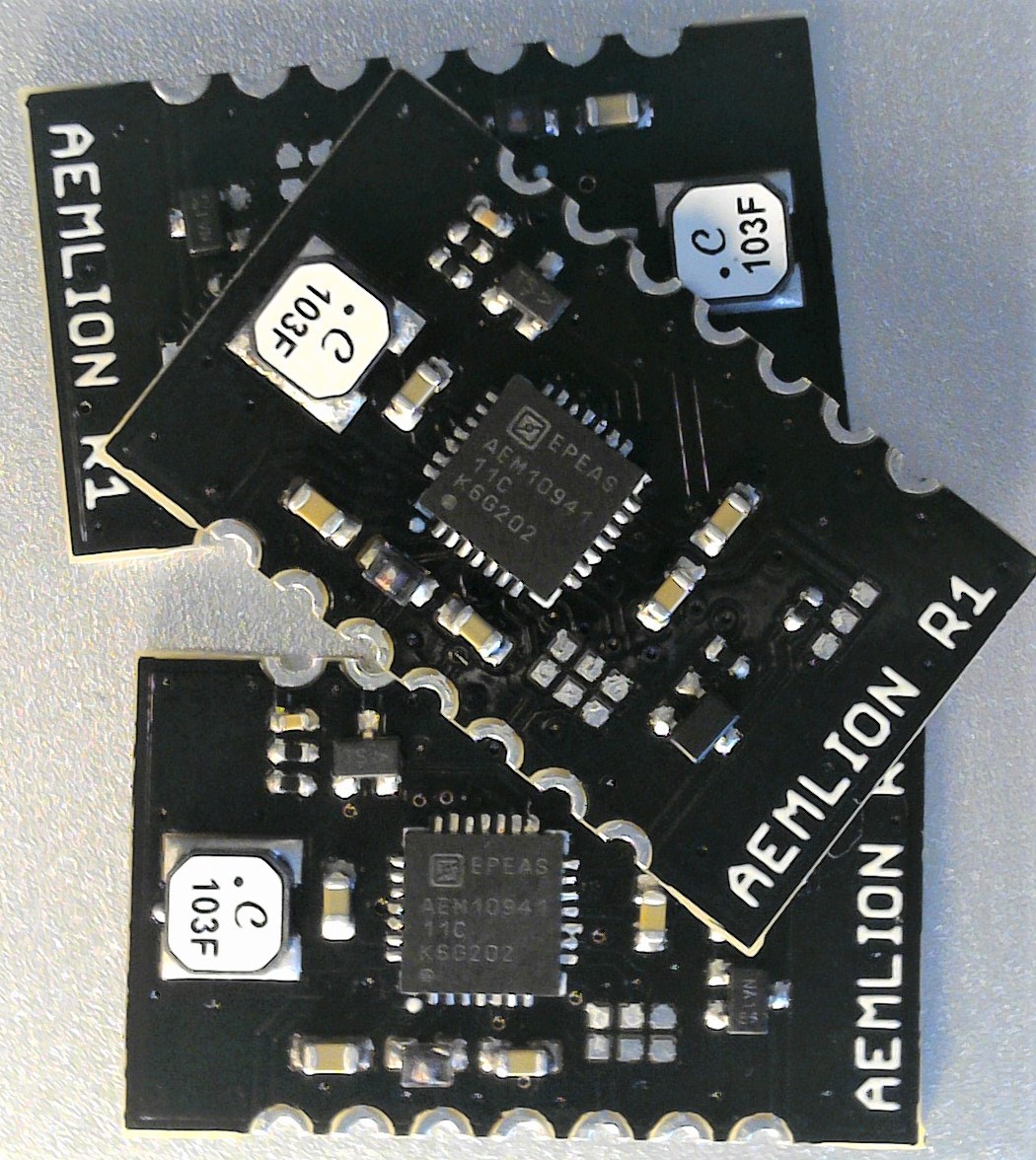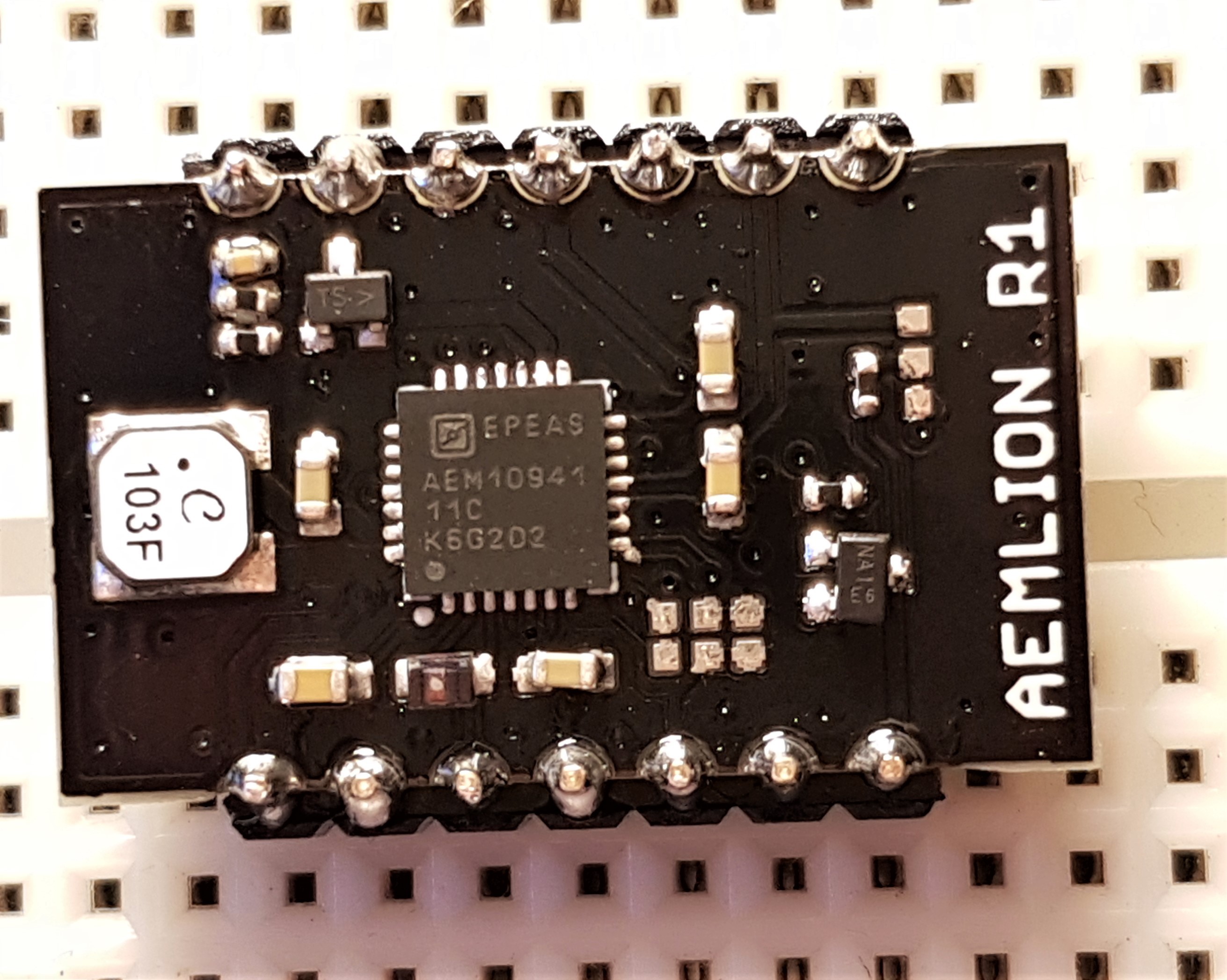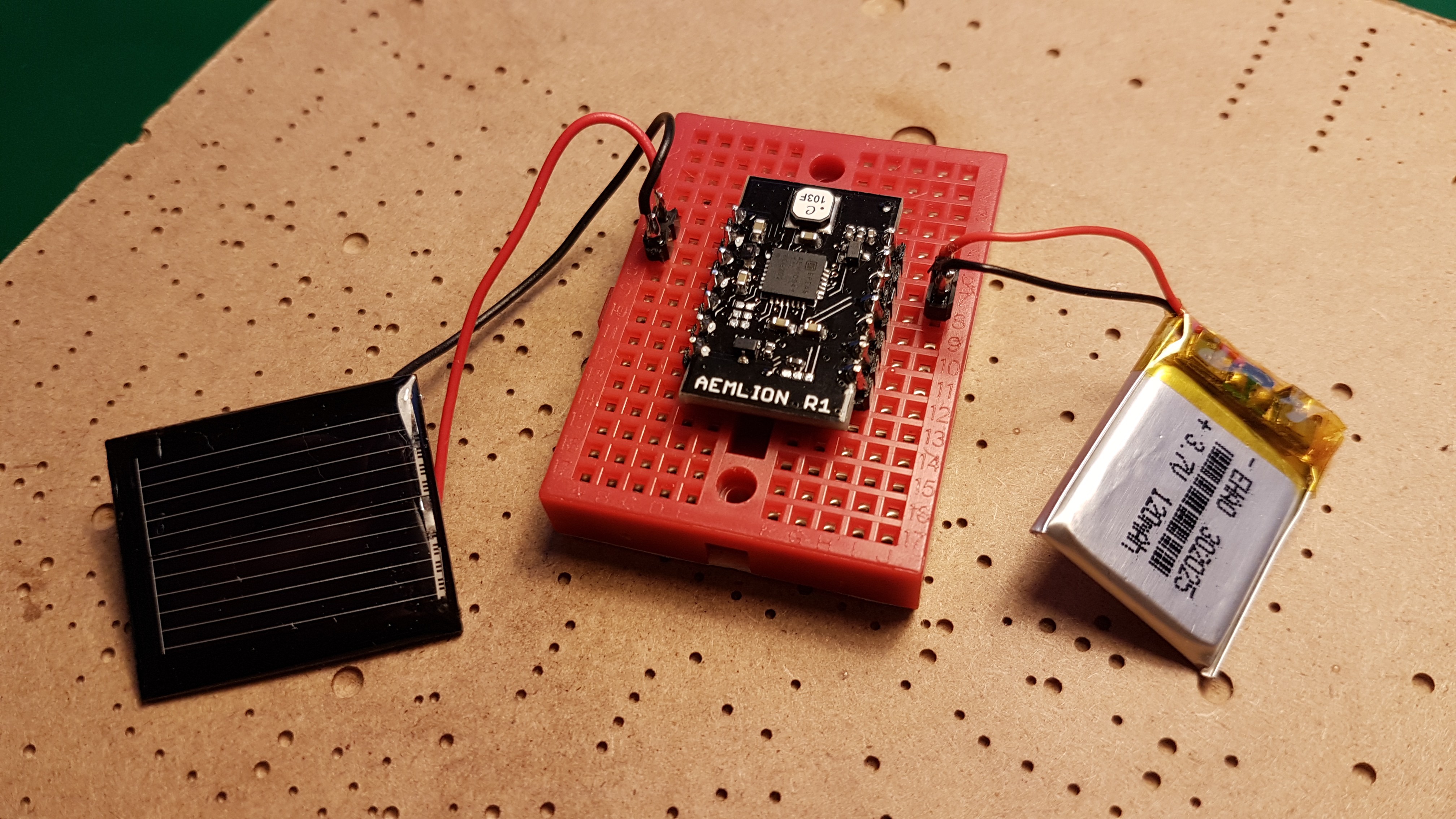I have soldered the components onto 3 boards using a solder paste stencil and a hot air gun.

They also solder well on to 0.1" header pins for use in a breadboard.

Then hardware verification could start.

I connected a 20x25mm Li-Ion battery and 1V/100mA 30x25mm solar panel. I measured the 1.8V and 3.3V on the outputs. which only happens when the circuit is able to charge. The solar panel voltage was close to the expected 75% of the open circuit voltage. The battery voltage divider with 4.7M and 10M resistors worked as expected. As well as the mosfet with the status output pin.
 Jasper Sikken
Jasper Sikken
Discussions
Become a Hackaday.io Member
Create an account to leave a comment. Already have an account? Log In.